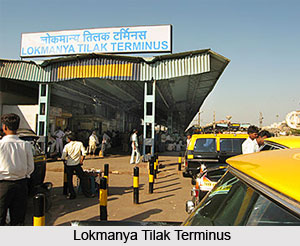 Lokmanya Tilak Terminus initially was known Kurla Terminus. It is situated in the suburbs of Mumbai, India. Lokmanya Tilak Terminus is administered by the Central Railway. The terminus is situated near the Kurla Station and Tilak Nagar Railway station. Brihanmumbai Municipal Corporation proposed to rename the station after Lokmanya Tilak in 1996. The project was finally approved in 1999 by the Union Home Minister, Lal Krishna Advani. Afterwards in 2003, the Lokmanya Tilak Terminus was again projected for further expansion. The main purpose was to take on more rail traffic, as the Chhatrapati Shivaji Terminus had reached its saturation point. It had become difficult for the Chhatrapati Shivaji Terminus to hold any more express trains. By 2006, the design of the terminus was completed and construction for a new terminus was started. The Mumbai Metropolitan Region Development Authority (MMRDA) also accorded to construct a ramp from LTT to the flyover to be built nearby. The ramp will be constructed as part of the Santa Cruz-Chembur Link Road.
Lokmanya Tilak Terminus initially was known Kurla Terminus. It is situated in the suburbs of Mumbai, India. Lokmanya Tilak Terminus is administered by the Central Railway. The terminus is situated near the Kurla Station and Tilak Nagar Railway station. Brihanmumbai Municipal Corporation proposed to rename the station after Lokmanya Tilak in 1996. The project was finally approved in 1999 by the Union Home Minister, Lal Krishna Advani. Afterwards in 2003, the Lokmanya Tilak Terminus was again projected for further expansion. The main purpose was to take on more rail traffic, as the Chhatrapati Shivaji Terminus had reached its saturation point. It had become difficult for the Chhatrapati Shivaji Terminus to hold any more express trains. By 2006, the design of the terminus was completed and construction for a new terminus was started. The Mumbai Metropolitan Region Development Authority (MMRDA) also accorded to construct a ramp from LTT to the flyover to be built nearby. The ramp will be constructed as part of the Santa Cruz-Chembur Link Road.















